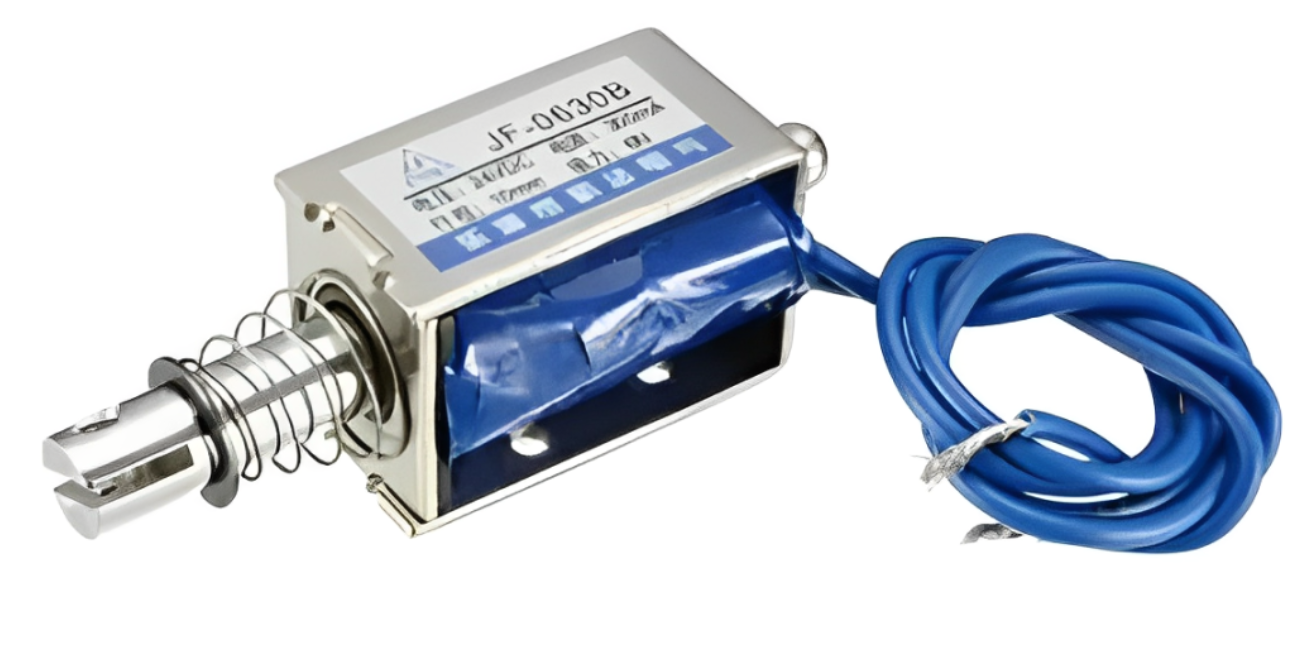Unleashing the Power of Precision: A Deep Dive into the JF-0630B DC 24V Solenoid
In the world of electromechanical components, solenoids play a crucial role in enabling precise and reliable linear motion. From automated machinery to intricate locking mechanisms, these devices are the unsung heroes of countless applications. Today, we're focusing on a specific workhorse: the JF-0630B DC 24V 300mA 10mm 6N Push Pull Solenoid Electromagnet. This blog post will dissect its specifications, explore its functionalities, discuss its applications, and highlight its advantages, providing you with a comprehensive understanding of this versatile component.
Understanding the Specifications:
The JF-0630B is characterized by several key specifications that dictate its performance and suitability for various applications. Let's break them down:
- Voltage: DC 24V. This indicates the solenoid operates on a 24-volt direct current power supply, a common standard in industrial settings.
- Current: 300mA. This is the amount of current the solenoid draws during operation. It's crucial for determining the power requirements of the circuit driving the solenoid.
- Stroke: 10mm. This refers to the linear distance the solenoid's plunger moves when energized. A 10mm stroke offers a decent range of motion for many applications.
- Force: 6N. This represents the force the solenoid exerts when pushing or pulling. 6 Newtons is a measure of the force the plunger can generate, a critical factor for determining the load it can handle.
- Type: Push-Pull. This signifies the solenoid's ability to operate in both push and pull modes, offering flexibility in design and implementation. When energized, the plunger can either push an object away or pull it towards the solenoid body.
How it Works:
The JF-0630B operates on the principle of electromagnetism. It consists of a coil of wire wrapped around a movable iron core, known as the plunger. When a 24V DC current is applied to the coil, it generates a magnetic field. This magnetic field attracts the iron plunger, causing it to move linearly within the solenoid body. The direction of the movement (push or pull) depends on the specific configuration of the solenoid and the application. When the current is switched off, a spring (often integrated within the solenoid) returns the plunger to its original position.
Applications Across Industries:
The JF-0630B's combination of compact size, reasonable force, and push-pull functionality makes it suitable for a diverse range of applications, including:
- Automated Machinery: Used in robotic arms, conveyor systems, and other automated equipment for precise control of movement.
- Locking Mechanisms: Employed in door locks, cabinet locks, and other security systems for reliable and automated locking and unlocking.
- Automotive: Found in various automotive systems, such as central locking, trunk release mechanisms, and other electromechanical actuators.
- Vending Machines: Used for dispensing products, controlling coin mechanisms, and other vending functions.
- Textile Machinery: Integrated into textile equipment for precise control of threads, levers, and other moving parts.
- Consumer Electronics: Used in certain electronic devices for controlling switches, levers, and other small mechanical movements.
Advantages of the JF-0630B:
- Compact Design: Its relatively small size makes it ideal for applications where space is limited.
- Versatile Functionality: The push-pull operation provides design flexibility for various applications.
- Reliable Performance: Solenoids are known for their reliability and long lifespan, requiring minimal maintenance.
- Cost-Effective: The JF-0630B offers a good balance of performance and price, making it a cost-effective solution for many applications.
- Ease of Integration: Its simple design makes it relatively easy to integrate into existing systems.
Key Considerations When Choosing a Solenoid:
When selecting a solenoid for your application, it's essential to consider the following factors:
- Voltage and Current Requirements: Ensure the solenoid's voltage and current ratings are compatible with your power supply.
- Force and Stroke: Choose a solenoid that provides sufficient force and stroke for your specific application.
- Duty Cycle: Consider the duty cycle, which refers to the percentage of time the solenoid is energized.
- Environmental Conditions: Ensure the solenoid is suitable for the environmental conditions in which it will be used (temperature, humidity, etc.).
- Mounting and Installation: Consider the mounting requirements and ensure the solenoid can be easily integrated into your system.
Conclusion:
The JF-0630B DC 24V 300mA 10mm 6N Push Pull Solenoid Electromagnet is a versatile and reliable component that finds applications across a wide range of industries. Its compact size, push-pull functionality, and cost-effectiveness make it an excellent choice for various electromechanical applications. By understanding its specifications, functionalities, and advantages, you can effectively leverage its capabilities to enhance your designs and projects. When selecting a solenoid, remember to carefully consider the key factors mentioned above to ensure optimal performance and compatibility with your specific needs. With careful planning and implementation, the JF-0630B can be a powerful tool in your engineering arsenal.

